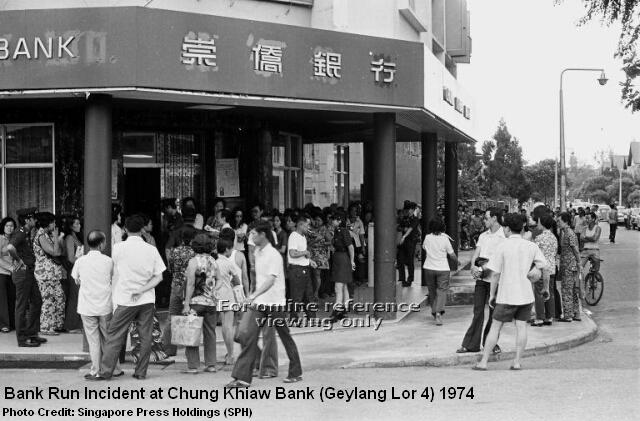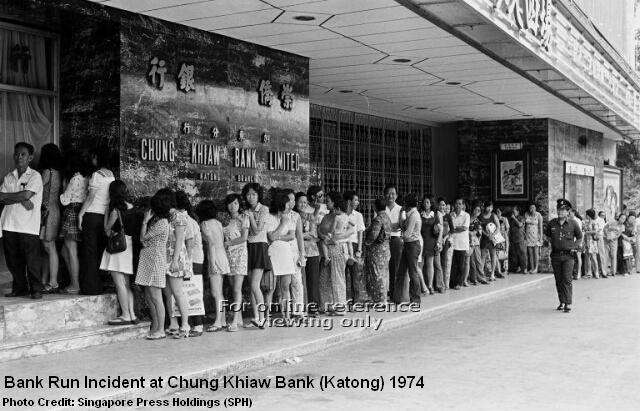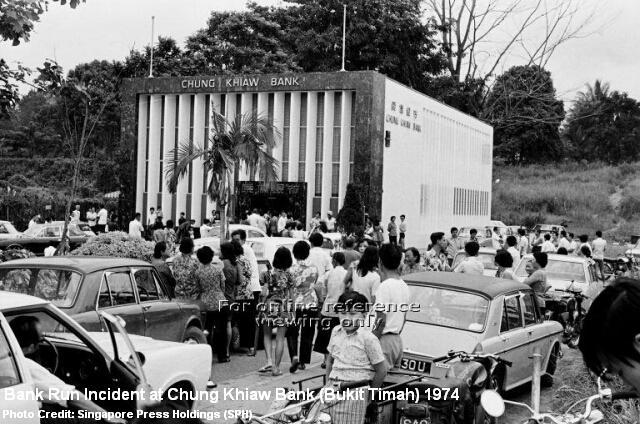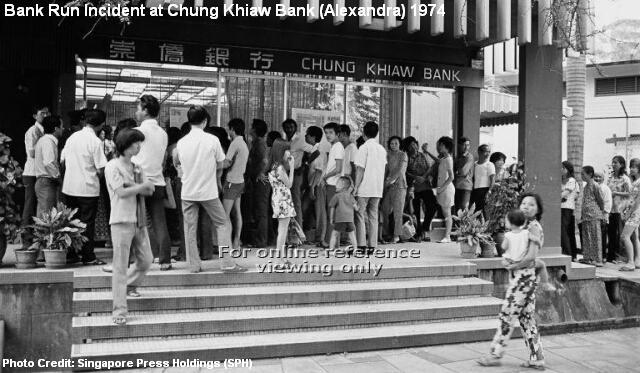The coming Economy collapse in Malaysia
Congratulations to Azmin and gang who won in the recent PKR election.
Next week will begin the Bank Run in Malaysia.
This good news is the reward for winning.
Also not to be forgotten is Mahathir and Daim who still think they are the only ones capable of running Malaysia AND FOR STEALING RM66 BILLION RECENTLY.
The next 6 months will show HOW CAPABLE MAHATHIR, DAIM AND AZMIN WILL RUIN THIS NATION MAKING 2 MILLION MALAYSIANS BANKRUPT AND WITHOUT JOBS.
BEFORE THE END OF THE 6 MONTHS, EVIDENCES WILL SHOW WHERE RM66 BILLION WENT AND THE AMOUNT OF SLUSH FUND AZMIN HAD AND WHO ARE THE PROXY. ALSO FULL DETAILS OF AZMIN ALI ACCUMULATED WEALTH FROM THE 11 YEARS ANWAR WAS IN JAIL.
******************************************





Next week will begin the Bank Run in Malaysia.
This good news is the reward for winning.
Also not to be forgotten is Mahathir and Daim who still think they are the only ones capable of running Malaysia AND FOR STEALING RM66 BILLION RECENTLY.
The next 6 months will show HOW CAPABLE MAHATHIR, DAIM AND AZMIN WILL RUIN THIS NATION MAKING 2 MILLION MALAYSIANS BANKRUPT AND WITHOUT JOBS.
BEFORE THE END OF THE 6 MONTHS, EVIDENCES WILL SHOW WHERE RM66 BILLION WENT AND THE AMOUNT OF SLUSH FUND AZMIN HAD AND WHO ARE THE PROXY. ALSO FULL DETAILS OF AZMIN ALI ACCUMULATED WEALTH FROM THE 11 YEARS ANWAR WAS IN JAIL.
******************************************
It was early October 1974.
The world economy was still suffering from the wide-spreading shocks caused by the global oil crisis that occurred a year earlier. Singapore, affected as well, posted its worst set of economic data after enjoying a double-digit growth rate since its independence in 1965. The economic uncertainty was likely one of the factors in the starting of the rumours, which spread quickly like wild fires that the financial health of the banks in Singapore had taken a big hit. Chung Khiaw Bank Limited, then part of The United Overseas Bank Limited (UOB) Group, was rumoured to have faced a severe liquidity position and could run out of money soon.

The Incident
In the morning of 3rd of October, crowds began to gather outside several branches of Chung Khiaw Bank. Its branch at Geylang Lorong 24 saw long lines of queues formed. Facing the increasingly anxious crowds that were growing larger in numbers, the police had to be called in to maintain order. A number of Chung Khiaw Bank branches had to extend their opening hours beyond their normal operations between 10am and 3pm. Chung Khiaw Bank’s Jalan Kayu branch was opened until 7pm, while its Geylang branch allowed its customers to withdraw their cash until 10pm.

By 8pm, there were still 300 people outside Chung Khiaw Bank at Geylang Lorong 24. A Cisco van arrived at Geylang with more money after the branch manager requested a requisition of $3 million cash for further cash withdrawals. Bank officials had to constantly reassure the crowds not to panic but it was not until 1030pm before the last customer made his successful withdrawal of deposits.
The Reassurance
The following days saw Chung Khiaw Bank releasing an official statement, citing the positive financial health of the bank. With an excess of $700 million in the form of government securities, treasury bills and physical cash, and a healthy loan deposit ratio of 63%, the bank hoped to quash the rumours and convince the people of its strong liquidity position. The Monetary Authority of Singapore (MAS) also pledged that the UOB group of banks was safe and well-protected. After further appeals by the Association of Banks, Singapore Chinese Chamber of Commerce and the Singapore Bank Employees Union, the size of the crowds queuing up to withdraw their savings finally began to ease by the fourth day since the bank run incident started.

The Establishment
Chung Khiaw Bank Limited was established in February 1950 by Aw Boon Haw (胡文虎, 1882-1954) to tap into the credit and loan sectors for businessmen of the smaller-scale companies. Aw Boon Haw, famous for his Tiger Balm ointment brand and Har Paw Villa, had a vast business empire ranging from traditional medicine and gold mining to banks and newspapers. He was also a generous philanthropist who had donated millions to charity causes.

Ahead of its times, Chung Khiaw Bank was fast growing and innovative in ways and services to increase its market share in the banking sector. It managed to report a fixed asset of nearly $35 million just five years after its establishment. In 1956, it launched the “mobile bank” scheme, where its vans were deployed to different parts of Singapore to bring banking services to those in need. A valet service was also introduced at its head office at Robinson Road, so that car owners visiting the bank would not be hindered by the limited parking lots.
In the sixties, the bank rolled out their coins “piggy” banks, in shapes of different animals such as pigs, rhinos and kangaroos, which proved extremely popular among the kids. Its strategy to reach out and woo the common folks and child depositors reaped spectacular results, earning the bank with a reputation of being a “small man’s bank”. By 1970, Chung Khiaw Bank had opened as many as 32 branches in Singapore; the latest were at Toa Payoh and High Street.

The Acquisition
UOB, established since 1935, remained a relatively small player in the Asia Pacific region after Singapore’s independence. After achieving its public listing on the Singapore and Malaysian stock exchanges in 1970, UOB proceeded with a series of aggressive acquisitions. Chung Khiaw Bank was its first target. A stake in Chung Khiaw Bank was acquired in June 1971, but it would take 16 years before UOB was able to buy up all of the shares in Chung Khiaw Bank and take full control. By 1999, the brand of Chung Khiaw finally ceased to exist when its operations in Singapore, Malaysia and Hong Kong were merged into UOB.
UOB went on to acquire other local banks: Lee Wah Bank (in 1973), Far Eastern Bank (1984), Singapore’s Industrial & Commercial Bank (1987) and Overseas Union Bank (2003). Today, it is part of Singapore’s “Big Three” banks, along with DBS (The Development Bank of Singapore Limited) and OCBC (The Overseas-Chinese Banking Corporation Limited)
Published: 22 April 2014

Comments